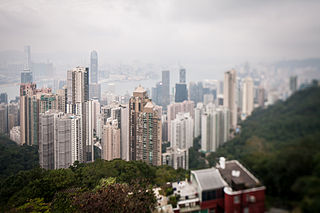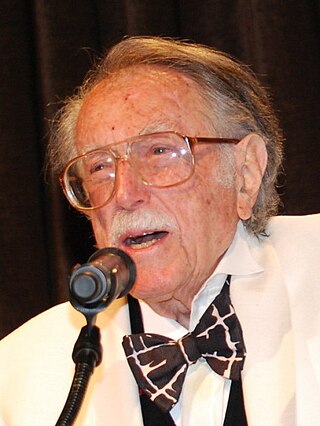
The Case Study Houses were experiments in American residential architecture sponsored by Arts & Architecture magazine, which commissioned major architects of the day, including Richard Neutra, Raphael Soriano, Craig Ellwood, Charles and Ray Eames, Pierre Koenig, Eero Saarinen, A. Quincy Jones, Edward Killingsworth, Rodney Walker, and Ralph Rapson to design and build inexpensive and efficient model homes for the United States residential housing boom caused by the end of World War II and the return of millions of soldiers.

Woodbury University is a private university in Burbank, California. Founded in 1884 with initial campuses in Downtown and Central Los Angeles, Woodbury University is one of the oldest institutions of higher education in Southern California. The university consists of four schools: the School of Business, the School of Architecture, the School of Liberal Arts, and the School of Media Culture & Design. It has been a subsidiary of University of Redlands since 2024.
The American Society of Media Photographers, abbreviated ASMP, is a professional association of imaging professionals, including photojournalists, architectural, underwater, food/culinary and advertising photographers as well as video/film makers and other specialists. Its members are primarily those who create images for publications, though many cross over into wedding and portrait photography.

Tilt–shift photography is the use of camera movements that change the orientation or position of the lens with respect to the film or image sensor on cameras.

Julius Shulman was an American architectural photographer best known for his photograph "Case Study House #22, Los Angeles, 1960. Pierre Koenig, Architect." The house is also known as the Stahl House. Shulman's photography spread the aesthetic of California's Mid-century modern architecture around the world. Through his many books, exhibits and personal appearances his work ushered in a new appreciation for the movement beginning in the 1990s.
Ezra Stoller was an American architectural photographer.
Architectural photography is the subgenre of the photography discipline where the primary emphasis is made to capturing photographs of buildings and similar architectural structures that are both aesthetically pleasing and accurate in terms of representations of their subjects. Architectural photographers are usually skilled in the use of specialized techniques and cameras for producing such specialized photography.
Pedro E. Guerrero was an American photographer known for his extraordinary access to Frank Lloyd Wright. He was a sought-after architectural photographer in the 1950s. In a career shift that was part serendipity and part the result of being blacklisted by the major shelter magazines for his stance against the Vietnam War, he later concentrated on documenting the work and lives of the American artists Alexander Calder and Louise Nevelson.

Lipetz House is a house in Los Angeles designed by Raphael Soriano, and built in 1936.

Hélène Binet is a Swiss-French architectural photographer based in London, who is also one of the leading architectural photographers in the world. She is most known for her work with architects Daniel Libeskind, Peter Zumthor and Zaha Hadid, and has published books on works of several architects.
Juergen Nogai is a German architecture, art and documentary photographer.
Hedrich Blessing Photographers was an architectural photography firm established in Chicago in 1929 by partners Ken Hedrich and Henry Blessing. The Chicago History Museum houses the archive of the first 50 years of photography (1929–1979), where it is available for viewing by the public. Hedrich Blessing collaborated with architects and designers both nationally and internationally but also undertook non-architectural work; industrial, product, editorial, and corporate photography.

Visual Acoustics: The Modernism Of Julius Shulman is a documentary film by Eric Bricker that explores the life and career of the much lauded architectural photographer Julius Shulman. His iconic photography shaped the careers of some of the great architects of the 20th century and helped define Modernism for the general public.
Soto-Michigan Jewish Community Center was a community center located at the corner of Soto Street and Michigan Avenue in the Boyle Heights section of Los Angeles, California. The building was notable for its architecture and cultural legacy, it has since closed and the building was demolished in 2006.
Leon Levinstein (1910–1988) was an American street photographer best known for his work documenting everyday street life in New York City from the 1950s through the 1980s. In 1975 Levinstein was awarded a Guggenheim Fellowship from the John Simon Guggenheim Memorial Foundation.

Wayne Thom is an international architectural photographer.

Lee Bey is architecture critic for the Chicago Sun-Times.

The Villa Hermosa is a mid-century modern private complex in the Old Las Palmas neighborhood of Palm Springs, California, United States. Located at 155 W Hermosa Place, near North Palm Canyon Drive and West El Alameda, it was originally commissioned as a residential hotel for winter visitors by C.K. Fulton in 1946. The property was featured in photos by Julius Shulman in 1947, and subsequently recognized locally as historically significant.
Jonathan Green is an American writer, historian of photography, curator, teacher, museum administrator, photographer, filmmaker and the founding Project Director of the Wexner Center for the Arts. A recognized authority on the history of American photography, Green’s books Camera Work: A Critical Anthology (1973) and American Photography: A Critical History 1945–1980 (1984) are two notable commentaries and frequently referenced and republished accounts in the field of photography. At the same time Green’s acquisitions, exhibitions and publications consistently drew from the edges of established photographic practice rather than from its traditional center. He supported acquisitions by socially activist artists like Adrian Piper and graffiti artist Furtura 2000, and hosted exhibitions on Rape, AIDS, new feminist art, and the work of photographer, choreographer and dancer Arnie Zane, the Diana camera images of Nancy Rexroth, the Polaroids and imitation biplanes of folk artist Leslie Payne, and the digital photographic work of Mexican photographer Pedro Meyer. This alternative focus help prime Green and the competition jury to choose an unconventional, deconstructive architect, Peter Eisenman, previously known primarily as a teacher and theorist, as the architect for the Wexner Center for the Arts. Green has held professorial and directorial positions at Massachusetts Institute of Technology, Ohio State University, and University of California, Riverside.










